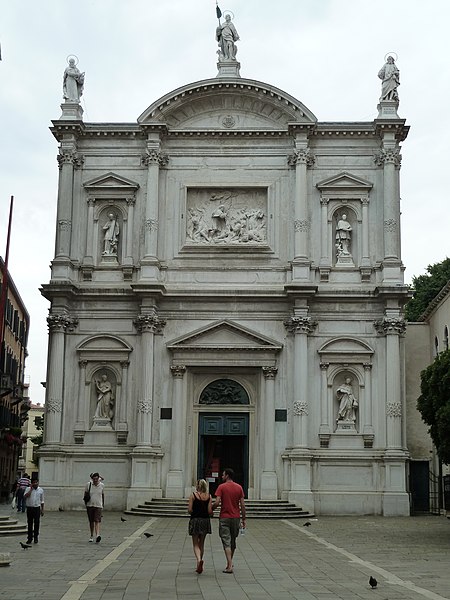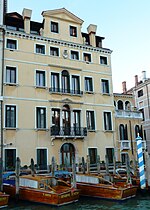San Rocco, Venice

The Church of Saint Roch (Italian: Chiesa di San Rocco) is a Roman Catholic church dedicated to Saint Roch in Venice, northern Italy. It was built between 1489 and 1508 by Bartolomeo Bon the Younger, but was substantially altered in 1725. The façade dates from 1765 to 1771, and was designed by Bernardino Maccarucci. The church is one of the Plague-churches built in Venice.St. Roch, whose relics rest in the church after their transfer from Voghera (trad. Montpellier), was declared a patron saint of the city in 1576. Every year, on his feast day (16 August), the Doge made a pilgrimage to the church. Near the church is the Scuola Grande di San Rocco, noted for its numerous Tintoretto paintings. It was founded in the 15th century as a confraternity to assist the citizens in time of plague.
Excerpt from the Wikipedia article San Rocco, Venice (License: CC BY-SA 3.0, Authors, Images).San Rocco, Venice
Campo San Rocco, Mestre Venezia-Murano-Burano
Geographical coordinates (GPS) Address External links Nearby Places Show on map
Geographical coordinates (GPS)
| Latitude | Longitude |
|---|---|
| N 45.436972222222 ° | E 12.325261111111 ° |
Address
Chiesa di San Rocco
Campo San Rocco
30170 Mestre, Venezia-Murano-Burano
Veneto, Italy
Open on Google Maps











